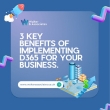
As you prepare your business for the challenges of 2025, you’ll need to contemplate a range of essential strategies to stay competitive. From embracing digital transformation to focusing on sustainability, the landscape is evolving rapidly. You might be familiar with some of these approaches, but others could surprise you. The key is to understand how these strategies work together to create a robust, future-proof business model. Whether you’re a small startup or a large corporation, these ten essential strategies will shape your success in the coming years. But what exactly are they, and how can you implement them effectively?
Digital Transformation Strategy
Nearly every business today must adopt digital transformation to remain competitive. Implementing a digital transformation strategy involves integrating technology into all business areas, fundamentally changing operations and customer value delivery. Companies prioritizing this approach are expected to achieve 40% higher revenue growth compared to those that don’t, highlighting its importance for gaining a competitive advantage.
To navigate this complex landscape, many businesses are turning to expert guidance from consultants who can help assess current models and identify gaps.
By 2025, an estimated 85% of customer interactions will be managed without human involvement, making automation and AI critical components of digital transformation strategies. To succeed, businesses must recognize that this shift requires more than just technological changes. It demands a cultural transformation, with 70% of organizations acknowledging that leadership buy-in is essential for overcoming resistance to change.
Effective utilization of data analytics in digital transformation efforts can improve decision-making speed by up to 5 times, enhancing overall operational efficiency.
As you plan your digital transformation strategy, consider how these technologies can streamline processes, improve customer experiences, and drive innovation. Remember, the goal isn’t just to adopt new technologies but to fundamentally reimagine how your business operates in the digital age.
Sustainability-Focused Business Model
Embracing sustainability as a core business model is no longer just a trend—it’s a necessity for forward-thinking companies in 2025. Successful leaders recognize that adopting a sustainability-focused business model can lead to significant benefits, both financially and regarding brand reputation.
By implementing eco-friendly practices, you can reduce your company’s carbon footprint and improve resource efficiency. This approach not only appeals to environmentally conscious consumers but can also result in substantial cost savings.
In fact, businesses implementing sustainable practices have reported up to 20% reduction in expenses through energy efficiency and waste reduction initiatives.
Consumer demand for sustainable products and services is on the rise, with 66% of global consumers willing to pay more for environmentally responsible brands. By aligning your business strategy with sustainability goals, you’re tapping into this growing market while also fostering innovation.
Nearly 40% of companies report that sustainability initiatives have led to the development of new products or services.
Moreover, a sustainability-focused approach can enhance your public image, as 73% of consumers believe companies should actively address environmental issues. By prioritizing sustainability, you’re positioning your business for long-term success in an increasingly eco-conscious marketplace.
Agile Operations Management
While sustainability remains a cornerstone of future-proof businesses, agile operations management has emerged as a game-changer for companies seeking to thrive in 2025’s fast-paced market. This approach focuses on flexibility and responsiveness, allowing organizations to quickly adapt to changing market demands and customer preferences.
By leveraging data-driven insights, companies can enhance their agility and make informed decisions that align with customer needs. As a business strategy, implementing agile methodologies can lead to a significant 20-30% increase in operational efficiency by streamlining processes and reducing waste.
Leaders who adopt agile operations often witness improved collaboration across teams, enhancing communication and accelerating decision-making. This iterative development approach can result in faster product delivery times, potentially reducing time-to-market by 25% or more.
You’ll find that companies employing agile practices report higher employee engagement levels, as teams are empowered to take ownership of their work and contribute to continuous improvement initiatives.
By adopting agile operations management, you’re positioning your organization to respond swiftly to market shifts, foster innovation, and maintain a competitive edge in the rapidly evolving business landscape of 2025.
It’s essential to incorporate this strategy into your overall business plan to guarantee long-term success and adaptability.
Customer-Centric Experience Design
At the heart of successful business strategies for 2025 lies customer-centric experience design. This approach focuses on understanding and meeting customer needs through personalized interactions and tailored services. By implementing customer-centric strategies, you can expect a 10-15% increase in customer retention rates, greatly impacting your overall profitability.
To achieve this, you’ll need to leverage data analytics to gather insights on customer behavior, allowing you to enhance your offerings and create more relevant marketing campaigns. Additionally, utilizing data-driven decisions will empower your organization to make informed choices that align with customer preferences.
Don’t underestimate the power of user experience (UX) design in digital platforms. A strong emphasis on UX can lead to a 200% increase in conversion rates, highlighting the importance of seamless customer journeys.
To stay ahead of the competition, prioritize customer feedback and continuously iterate your design processes. Companies that do this are 2.5 times more likely to outperform competitors regarding revenue growth.
Data-Driven Decision Making
Data-driven decision making underpins the success of customer-centric strategies and propels businesses forward in 2025. You’ll find that companies embracing this approach are 23 times more likely to acquire customers and 6 times more likely to retain them.
By implementing advanced analytics tools, you can improve your forecasting accuracy by up to 50%, allowing you to make proactive decisions aligned with your strategic goals.
To stay competitive, you’ll need to leverage data effectively. This can lead to a 20-30% reduction in operational costs by identifying inefficiencies and optimizing resource allocation.
Additionally, data-driven decision making fosters a culture of accountability and performance measurement, with 70% of organizations reporting improved employee engagement and satisfaction.
You’ll see tangible benefits in productivity and profitability, with data-driven companies experiencing 5-6% higher performance compared to their non-data-driven counterparts.
As you navigate the business landscape of 2025, remember that data-driven strategies aren’t just a trend but a necessity for success. By embracing this approach, you’ll position your organization to make informed decisions, enhance customer engagement, and drive sustainable growth.
Talent Acquisition and Retention
As businesses evolve in 2025, talent acquisition and retention become critical pillars of success.
You’ll need to focus on employer branding, as 75% of job seekers consider a company’s reputation before applying. This strategy isn’t just about attracting talent; it’s also about keeping it. Implementing strong employee retention programs can cut turnover costs by up to 50%, directly impacting your bottom line.
Diversity in your talent acquisition efforts isn’t just ethical; it’s profitable. Companies with diverse hiring practices are 70% more likely to capture new markets.
Once you’ve hired top talent, retention becomes essential. Regular recognition is key, with 93% of employees more likely to stay for three years when they receive it.
Don’t underestimate the power of a good start, either. A thorough onboarding process can boost new hire retention rates by 82%.
Innovative Product Development
While attracting and retaining top talent sets the foundation for success, your company’s ability to innovate will determine its growth trajectory in 2025.
Innovative product development is essential for staying ahead in a rapidly evolving market. By aligning your products with customer feedback, you can potentially increase your market share by 20%. To achieve this, you’ll need to prioritize R&D investment, aiming for an average of 15% of revenue. This strategy makes you 25% more likely to launch successful new products within the first year.
Adopting agile methodologies can notably reduce your time-to-market by up to 30%, allowing you to respond swiftly to changing market conditions.
Don’t overlook the importance of sustainability in your product design. With 72% of consumers preferring eco-friendly products, incorporating sustainable practices can improve brand loyalty and reduce costs.
Finally, leverage data analytics to identify market trends and consumer behaviors. This approach can increase your product’s likelihood of success by 35%.
Global Market Expansion
In 2025, global market expansion will be a key driver for business growth. With a projected CAGR of 8.7% from 2023 to 2028, you’ll need to tap into emerging markets to stay competitive.
Digital platforms and e-commerce will be vital tools, as global online sales are expected to reach $6.4 trillion in 2024. You can leverage these technologies to connect with international consumers and expand your reach.
To succeed in new territories, you should consider forming strategic partnerships with local businesses. This approach can help mitigate risks and boost brand recognition in unfamiliar markets.
However, it’s important to understand cultural nuances and consumer behavior, as 70% of global marketing strategies fail due to a lack of localized approaches. You’ll need to tailor your strategies to each market’s unique characteristics.
Don’t overlook geopolitical factors when planning your expansion. Nearly half of executives cite political instability as a significant barrier to international growth.
Cybersecurity and Risk Management
Cybersecurity threats loom large on the horizon for businesses in 2025. As projected spending on cybersecurity surpasses $1 trillion cumulatively, it’s clear that robust security measures are no longer optional. You must prioritize cybersecurity and risk management strategies to protect your business from devastating financial losses and potential closure.
Consider the stark reality: 60% of small businesses that fall victim to cyber attacks shut down within six months. With the average data breach costing $4.45 million in 2023, investing in preventive measures is essential.
Implementing a thorough cybersecurity framework, such as the NIST Cybersecurity Framework, can help you effectively identify, protect, detect, respond, and recover from cyber incidents.
To stay ahead of evolving threats, you should explore adopting a zero-trust security model. By 2025, 70% of organizations plan to implement this approach, which requires continuous verification of user identities and device integrity.
Strategic Partnerships and Alliances
Strategic partnerships and alliances have become a cornerstone of business success in 2025. Companies that adopt these collaborations gain a significant competitive advantage, with research showing up to 30% increased revenue growth compared to those that don’t. By combining resources, expertise, and market access, businesses can navigate the complexities of today’s landscape more effectively.
To maximize the benefits of strategic partnerships, you’ll want to focus on shared goals and complementary strengths. This approach allows for faster innovation and more agile responses to market changes. It’s no wonder that 65% of executives consider these alliances essential for long-term sustainability and profitability.
You’ll also find that strategic partnerships can lead to substantial cost reductions, with potential savings of up to 25% through shared resources and risk mitigation. This frees up capital for investment in innovation and growth initiatives.
As you plan for the future, remember that successful alliances are built on mutual benefit and trust. By leveraging the strengths of your partners, you’ll be better positioned to tackle the challenges and opportunities that lie ahead in the dynamic business environment of 2025.






















